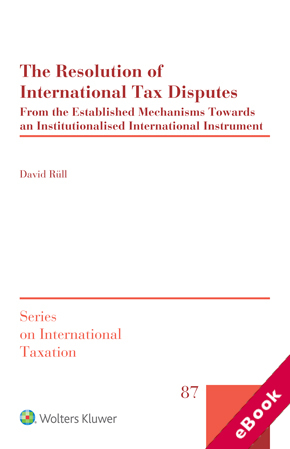
The device(s) you use to access the eBook content must be authorized with an Adobe ID before you download the product otherwise it will fail to register correctly.
For further information see https://www.wildy.com/ebook-formats
Once the order is confirmed an automated e-mail will be sent to you to allow you to download the eBook.
All eBooks are supplied firm sale and cannot be returned. If you believe there is a fault with your eBook then contact us on ebooks@wildy.com and we will help in resolving the issue. This does not affect your statutory rights.
The Resolution of International Tax Disputes is a timely and thoroughgoing book offering an institutionalised international tax dispute resolution mechanism that considers the interests of taxpayers, states, and the public and allows for a swift and binding resolution of international tax disputes.
The number of international tax disputes is constantly on the rise. On the one hand, this is a consequence of the pressure that is exerted on the global tax system by the increasing number of internationally active and mobile taxpayers and tax competition between states. On the other hand, the implementation of measures to tackle base erosion and profit shifting (BEPS) by multinational enterprises already triggers further disputes, and another surge of disputes might arise from the latest reforms of the international tax system, namely the Two-Pillar-Solution to address the tax challenges arising from the digitalisation of the economy.
A comprehensive overview of existing international tax dispute resolution mechanisms – and an analysis of their procedural rules, advantages, and disadvantages – leads to a deeply informed proposal on how they can be further developed to ensure greater fairness and equity for all stakeholders. Among the lines of conflict that characterise international tax disputes, the author elucidates how improvements in the design of dispute resolution mechanisms may be found. The following questions are included:
A draft convention that would implement the author’s suggestions concludes the book.